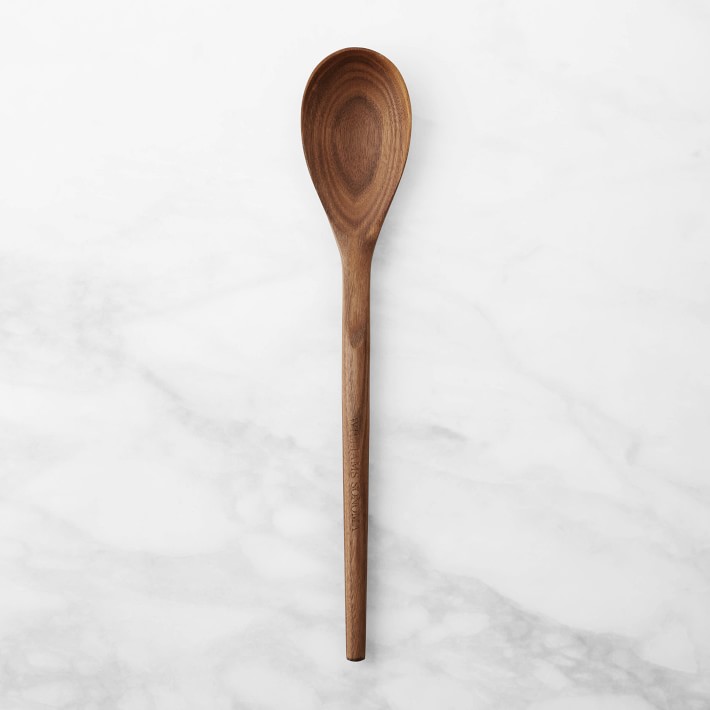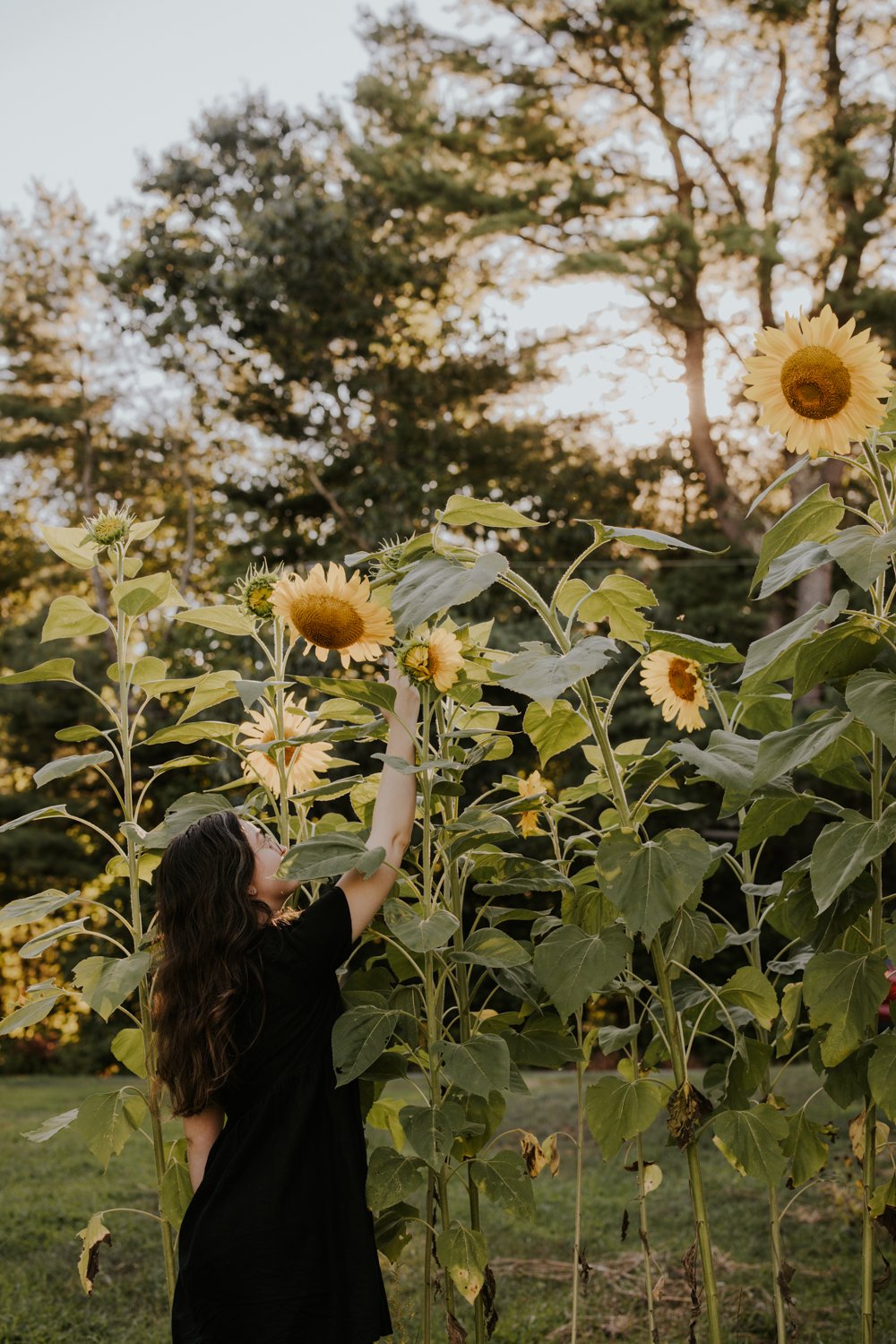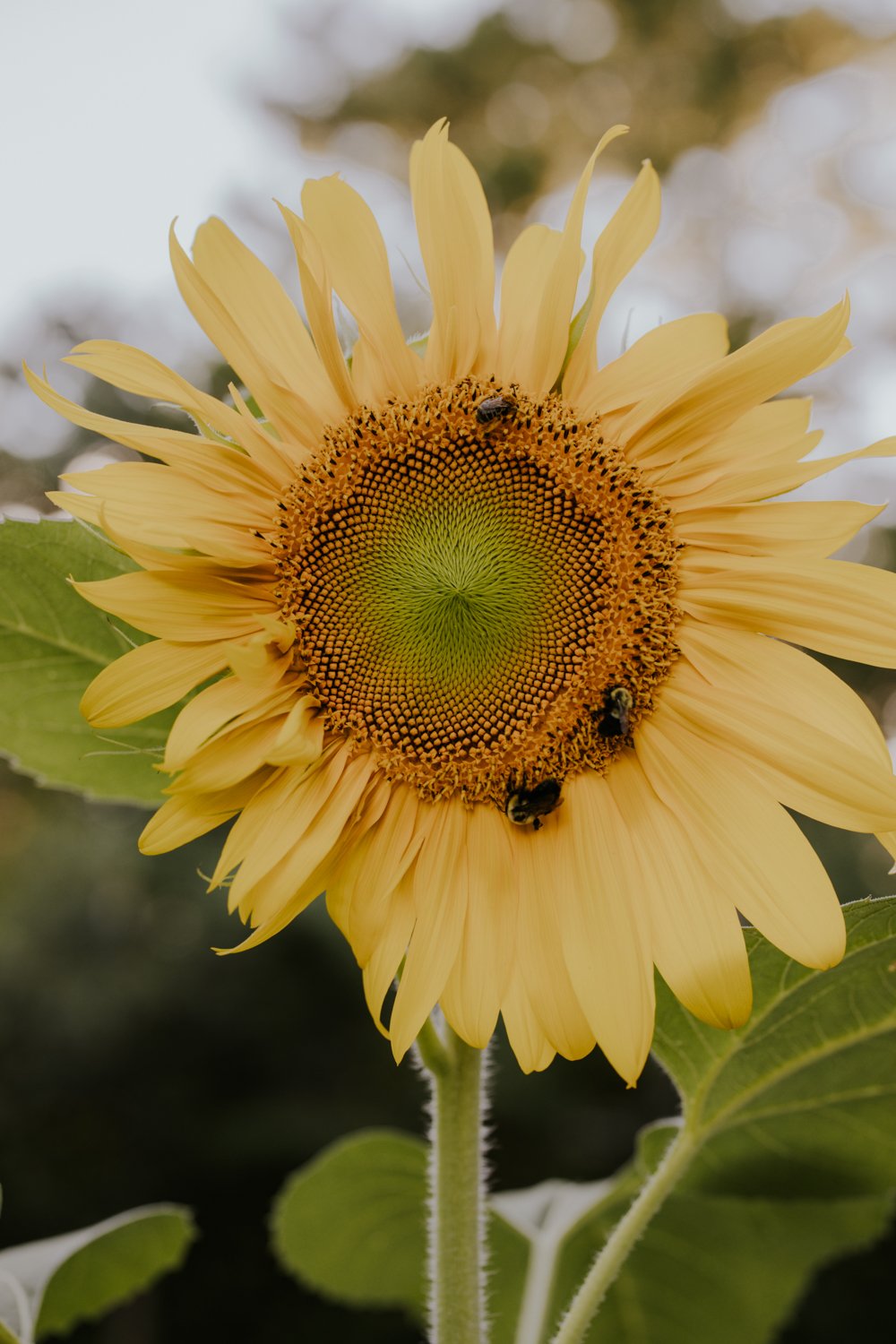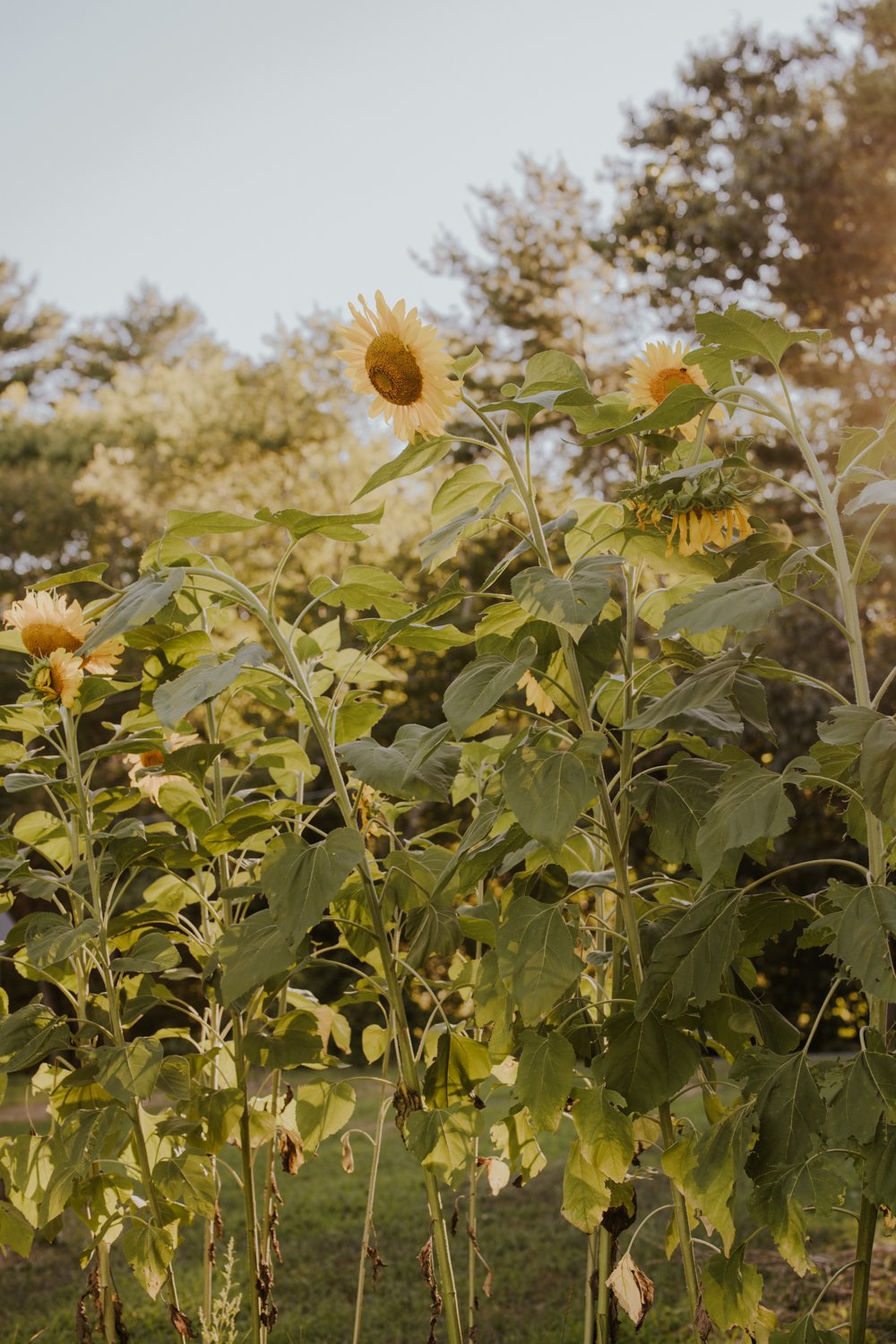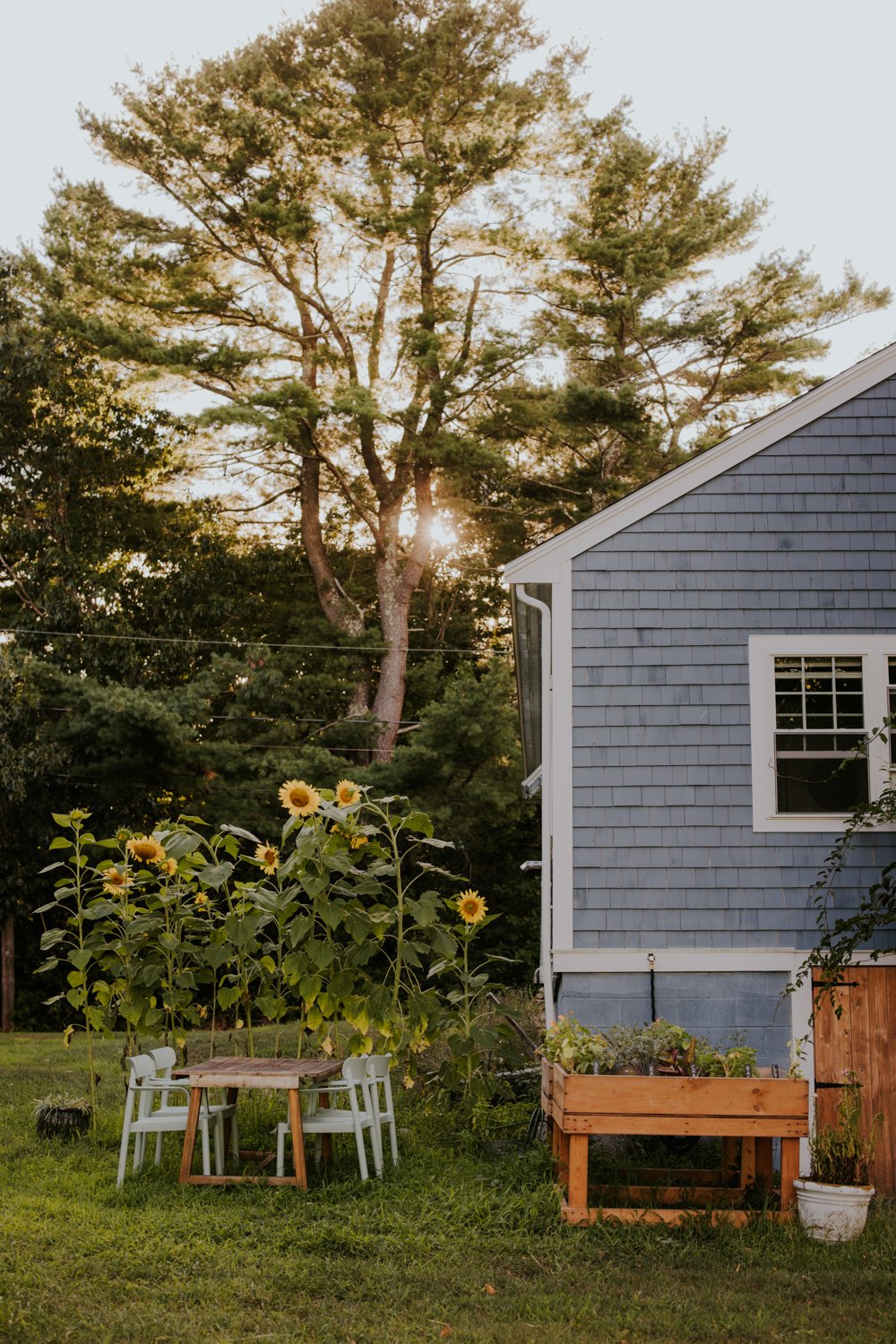BACKYARD GARDENING MADE SIMPLE
Recipe: Homemade Hot Chocolate
There is nothing quite so nostalgic and comforting as curling up for a cozy night by the fire in your wool socks to watch a holiday movie while clutching a mug of warm homemade hot chocolate. With the sun leaving us for the day earlier and earlier each day, finding ways to keep ourselves occupied in the evening hours can be challenging, and so we tend to fall back on the traditions of childhood to keep us awake until bedtime. But this is not a post about my bedtime routine, as much as I would like to lull us all to sleep with that tale! This is a post about the unimpeachable winter drink to top all winter drinks (eggnog lovers cover your ears!) hot chocolate
The Cottage Peach is reader-supported. When you purchase through links on our site, we may earn an affiliate commission at no additional cost to you. All opinions are our own.
There is nothing quite so nostalgic and comforting as curling up for a cozy night by the fire in your wool socks to watch a holiday movie while clutching a mug of warm homemade hot chocolate. With the sun leaving us for the day earlier and earlier each day, finding ways to keep ourselves occupied in the evening hours can be challenging, and so we tend to fall back on the traditions of childhood to keep us awake until bedtime. But this is not a post about my bedtime routine, as much as I would like to lull us all to sleep with that tale! This is a post about the unimpeachable winter drink to top all winter drinks (eggnog lovers cover your ears!) hot chocolate
Now, to be clear I’m not knocking a mug of nutmeg and nog - far from it. But hot chocolate is just on another level. The rich, creamy thick and warm liquid can have as much or as little depth of flavor as you like, depending on the chocolate used. My personal favorite is Mexican hot chocolate. We have a local chocolate company here in Massachusetts called Taza Chocolate that makes a perfectly portioned disk of chocolate with which to make yourself a mug full. At first, the experience is full of uncertainty - are you really supposed to put THIS much chocolate in one serving? But then as the chocolate melts and blends with your chosen milk and alchemy conspires to create the most spectacularly rich and thick molten treat you can imagine. This is not for the faint of heart, so you better love chocolate if you’re going to make your own. A drink this rich coats your mouth with the flavors of fermenting cacao bean, the acidity reminiscent of coffee, and the subtle sweetness of dark chocolate.
If this sounds like an experience you need to try, you can find Taza Chocolate in many health food stores or purchase online, this is not an affiliate link just love supporting local!
Hot chocolate also offers an endless array of options for flavoring and add-ins that are simple but can have a huge impact on the end result.
Add peppermint to lighten the overall flavor and add a festive touch
Add cinnamon and salt to bring out the different flavors in the cacao beans
Add caramel for the comforting sweetness of browned butter and sugar
Toppings are add-ins that compliment your hot chocolate drink, creating a full dessert experience in your mug.
I’m personally partial to the dandies vegan marshmallows for my hot chocolate garnish, but any marshmallow will do - I think hot chocolate is the only place those hard dried mini marshmallows have a chance to really shine.
Bump up the sweetness factor with a chocolate covered spoon or caramel dipped rim coated in sea salt.
Hook a candy cane over the side to keep your mug company and your breath minty.
Can you make hot chocolate with non-dairy milk?
Yes, and I do this myself as I can’t drink cow’s milk. After nearly a decade of trial and error, I can say with certainty that the best non-dairy milk to use when making homemade hot chocolate is without a doubt oat milk, since oat milk is usually richer and mimics whole milk best.
There’s no reason that vegan hot chocolate can’t be just as rich and delicious as hot chocolate made with cow’s milk. Try coconut milk, soy milk and almond milk too and see which one is your favorite.
Sourcing ethical cacao
Whether you decide to make peppermint hot chocolate, dark hot chocolate, caramel hot chocolate or plain I would urge you to consider the origins of your chocolate.
Cocoa and chocolate come from the cacao tree, which thrives in the rainforest.
According to Source Trace, on average cacao farmers earn less than $2 per day, an income much below the poverty line.
As per the latest report on cacao farming, close to two million children in the Ivory Coast and Ghana are engaged in child labor in hazardous conditions.
Also, cacao production is rising at an alarming rate – it has risen by 62% over the last two decades. This is a serious threat to Africa’s forest cover as farmers are choosing to expand their growing operations into rainforests and other patches of land. 40% of the cacao coming from the Ivory Coast can be traced back to being grown in protected lands.
The best way to tell if your cacao is ethically sourced is to buy from companies who share the origin of their cacao and practice fair or direct trade, utilizing third party verification to certify their claims. You should also look for transparency reports available on their website.
What is direct trade?
Currently, there is no industry standard for direct trade in the cacao industry. As one example, Taza created their own direct trade program which they are held accountable for by a third party company. Their program focuses on real relationships (they meet with the farmers whose cacao they are purchasing) quality (they only purchase USDA certified organic cacao) and fair wages.
The main way that direct trade is different from fair trade is that direct trade purchasers typically pay their farmers more than fair trade companies. Direct trade companies may pay a 15%-20% premium to their cacao farmers compared to similar fair trade companies. In exchange for this higher rate, these farmers are expected to produce a high quality, organic product and use production methods that lower the environmental impact of growing cacao trees.
So why should you make your homemade hot chocolate on the stovetop rather than the slow cooker? While I encourage you to utilize whatever cooking methods you need to in order to support your own body’s limitations, I consider the stovetop version to be an easy way to practice some mindfulness in my day. Warming your hot chocolate beverage on the stovetop forces you to pause and be present. Sometimes, coming off of autopilot is the best way to fully appreciate the beauty of winter in all its glory. So, pull up a chair if you need to and truly allow yourself to savor the experience - from the comforting scent of the chocolate to the invigorating scent of mint.
Of course, when you’re finished making my best hot chocolate recipe, the mug you choose to enjoy it in can be equally as important in determining how cozy of an experience you create. I like to put out an enticing array of handmade ceramic mugs for my guests to choose from, alongside a tray with add-ins like marshmallows and candy canes they can add as a garnish to their drink. Make this hot chocolate as the perfect refreshment for your cozy movie night with friends!
What’s the difference between hot chocolate and hot cocoa?
Hot chocolate refers to a decadent dessert drink made with real melted chocolate blended into a liquid, usually milk. Hot cocoa uses cocoa powder dissolved in milk or water and is generally lighter and thinner. While both can be delicious, today I’ll be sharing with you a recipe for homemade Mexican hot chocolate.
What is Mexican chocolate?
According to The Spruce Eats, “The craft of chocolate making can be traced back to 1900 BCE in Mesoamerica and in fact, it appears the way the Aztecs prepared it is similar to how Mexicans do today. The cacao beans are typically fermented, roasted, peeled, and then ground into a paste using either a metate, which is a traditional tool for hand-grinding materials or with a molino, a mill. Sugar is then mixed in and from here, cinnamon is traditionally added…Finally, the chocolate is worked into its final shape, which is most often a disc or log. This rustic presentation works perfectly since Mexican chocolate is still made by hand in many regions.”
How to make homemade chocolate recipe:
This hot chocolate recipe is so easy, and only requires a handful of ingredients. As with most simple recipes, the best way to dress it up is in the quality of the ingredients you choose. While we can all appreciate the nostalgia of the instant hot chocolate packets you can get at any supermarket, this Mexican hot chocolate recipe is a much richer, more decadent treat to warm you all the way through. You’ll just need a saucepan, your milk of choice, and a high quality chocolate like these disks from Taza to get started. From there it’s choose-your-own-adventure to add additional flavors and garnishes.
Mexican Hot Chocolate Recipe (modified from recipe by Taza Chocolate)
Mexican Hot Chocolate
Ingredients
- 2.7oz dark chocolate bar (The Taza chocolate disks are the perfect size)
- 2 cups milk, non-dairy or cow
- ¼ tsp vanilla extract
- 2 tbsp maple syrup
- Pinch of salt
Instructions
- Roughly chop or grate the chocolate and set aside.
- Heat two cups of milk in a small saucepan over medium heat to just below a simmer.
- Remove the milk from heat and add a pinch of salt.
- Slowly mix in the chocolate, stirring frequently until dissolved.
- When the chocolate is dissolved, return the mixture to the stove and re-warm over low heat.
- While the chocolate is warming, use a whisk or molinillo to froth the chocolate.
- When the chocolate is hot and frothy, remove from heat and serve.
Nutrition Facts
Calories
430.78Fat
24.13Sat. Fat
13.91Carbs
42.51Fiber
4.17Net carbs
38.34Sugar
32.97Protein
10.99Sodium
121.6Cholesterol
30.43How to Save Sunflower Seeds
If you’re wondering if sunflower seeds are good for you, here’s what you need to know: a quarter cup of shelled sunflower seeds has almost 6 grams of protein and 4 grams of fiber, and the seeds are packed with nutrition, providing a variety of vitamins, iron, copper, calcium, selenium, zinc, potassium, and manganese. Sunflower seeds are helpful to our bodies in many ways, from decreasing risk of heart disease to boosting our immune systems.
Health benefits of sunflower seeds include:
Ask me what snack tastes most like summer to me and I’ll say tomatoes, but sunflower seeds come in as a close second. Crunchy, salty, natural and good for you - who could ask for more in a snack?
Health Benefits of Sunflower Seeds
If you’re wondering if sunflower seeds are good for you, here’s what you need to know: a quarter cup of shelled sunflower seeds has almost 6 grams of protein and 4 grams of fiber, and the seeds are packed with nutrition, providing a variety of vitamins, iron, copper, calcium, selenium, zinc, potassium, and manganese. Sunflower seeds are helpful to our bodies in many ways, from decreasing risk of heart disease to boosting our immune systems.
Health benefits of sunflower seeds include:
Anti-inflammatory Properties: The vitamin E , selenium, and flavonoids in sunflower seeds can reduce inflammation.
Healthy fats: A 1/4 cup serving of sunflower seeds contains about 14 grams of polyunsaturated and monounsaturated fats. These fats are linked to lower rates of heart disease, high cholesterol, and high blood pressure.
A boost for the immune system: The zinc and selenium in sunflower seeds can boost your body’s ability to fight off viruses. Zinc is vital to helping your body develop and maintain immune cells, while selenium helps fight infection.
Energy: Sunflower seeds are rich in protein, which directly contributes to your energy levels, but other nutrients in the seeds also contribute to keeping you active. Vitamin B1 (thiamin) helps your body convert food to energy, while vitamin B helps maintain that energy. The same selenium which helps your body fight infections also increases your blood flow, delivering more oxygen to your body, resulting in more energy.
How to Plant Sunflower Seeds
Sunflowers grow easily from seed and can be sown directly into the ground. They are not particular about soil conditions, and will be happy as long as they are planted in full sun.
Sunflower seeds do not like cold, and should be planted two to three weeks after the last average frost date, when the temperature of the soil is consistently warmed.
This will generally be somewhere between mid-April and mid-June. The timing of the planting can be individual to the variety, so check your seed packet.
From that point on you can succession sow, planting seeds every couple of weeks to extend your season.
Most sunflower seeds are planted 1-2” deep, but follow the directions for spacing printed on your seed packet. If you would like to produce smaller flowers, plant your seeds a bit closer than recommended.
Keep your seeds consistently moist until the plants’ root systems have had a chance to establish themselves.
Sunflower seeds are a favorite among the animals and birds we typically share the land with, so it’s best to protect the seeds through germination. This can be done by placing a mason jar upside-down on top of the soil above each seed. This will not only prevent thieving critters from stealing your seed, it will create a warm and moist environment for germination.
Once your plants emerge, remove the jars and thin the plants to provide proper spacing.
What Kinds of Sunflowers Should I Plant to Eat?
Some sunflowers are grown for cutting, and produce little to no pollen, without which they cannot produce seed. Others are grown particularly for their ability to produce delicious seed.
Varieties grown for edible seeds are sometimes called ‘confection’ types. Taller sunflowers produce the biggest crop of seeds, but there are shorter cultivars available which are bred to produce plump, delicious seeds.
What edible sunflower seeds should you buy?
It’s worth nothing that not only are the seeds edible, but the small buds of many varieties can also be grilled, marinated, or sauteed for an unusual appetizer or side dish.
With yellow-tipped, bronze-red petals, 'Shock-O-Lat' is sure to draw attention. Contrasting purple-tinged stems are well-branched, offering a multitude of pollenless blooms for bouquets. Sunflowers are edible, with a bittersweet flavor. The petals add a pretty pop of color ion salads and desserts. The young, sunflower buds are edible, with a flavor similar to artichoke hearts. They can be grilled, marinated, or sauteed for an unusual appetizer or side dish. The 6" flowers can be tamed down to 3" by spacing plants closely (10" apart). Tap to shop.
Each 'Mongolian Giant' plant produces a single yellow flower up to 18" across that will provide extra-large seeds filled with tasty, hearty kernels. These single-stem sunflowers attract pollinators and are very easy to grow in almost any sunny garden, although a sunflower's size is dependent on the growing conditions. They also are drought tolerant and fast growing; you can almost watch them gain an inch or more a day! Inside this packet, we've included tips on how to protect your ripening seeds from squirrels and birds, and a recipe for roasting seeds. Edible, bittersweet petals make a sunny garnish on salads and appetizer plates. Tap to shop
This giant among sunflowers is a fast grower whose single stalk can reach 12' tall and produces one 10"-12" flower! Not fussy about soil, it's very easy to grow and drought tolerant. Grow in a tight row to make an attractive screen. Sow monthly for continual bloom. Tap to shop
A unique addition to your flower bed, these bright yellow puffball blossoms will give you a warm, fuzzy feeling! 'Teddy Bear' produces many 3"-5" flowers on a 24"-36" tall, multi-branching plant; beautiful as a short hedge and makes a fabulous cut flower. Sunflowers are edible, with a bittersweet flavor. The petals add a pretty pop of color ion salads and desserts. The young, sunflower buds are edible, with a flavor similar to artichoke hearts. They can be grilled, marinated, or sauteed for an unusual appetizer or side dish. Great for kids to grow due to the large seed and fast growth. Drought-tolerant once established, and attracts pollinators. Non-fussy plant blooms until fall. Tap to shop
When to Harvest Sunflower Seeds for Eating
You will want to wait to harvest when the sunflower has lost petals, and the back of the flower is yellow with some brown spots. Any flower on which seeds feel a bit like wiggly teeth should be harvested immediately.
If it’s almost time to harvest and you’re concerned about wildlife getting to the seeds before you do, as soon as petals start falling, tie a brown paper bag or some cheesecloth around the flower right out in the garden and leave it until the seeds are mature.
How to Harvest Sunflowers
Once the flowers are ready for harvesting cut them off the stem an inch or so behind the flower. Remove the leaves and the loose petals around the edge of the flower.
Sunflower seeds form beneath tiny flowers (florets). At this point, the florets will be dry, and you can use your hand to wipe them off and reveal the seeds.
Harvesting Sunflower Seeds to Eat
Some flowers will have seeds you can easily coax out with your fingers or by rubbing two sunflowers together.
For tighter groupings of seeds, you have a few options:
Cutting the flower will expose edges, making it easier to get in under the seeds.
A spoon will allow you to dig in a bit to get things started.
A knife accomplishes the same thing as a spoon, with a bit more danger for thrill-seekers.
If the seeds are extremely tight, allow them to dry longer on the flower head before harvesting.
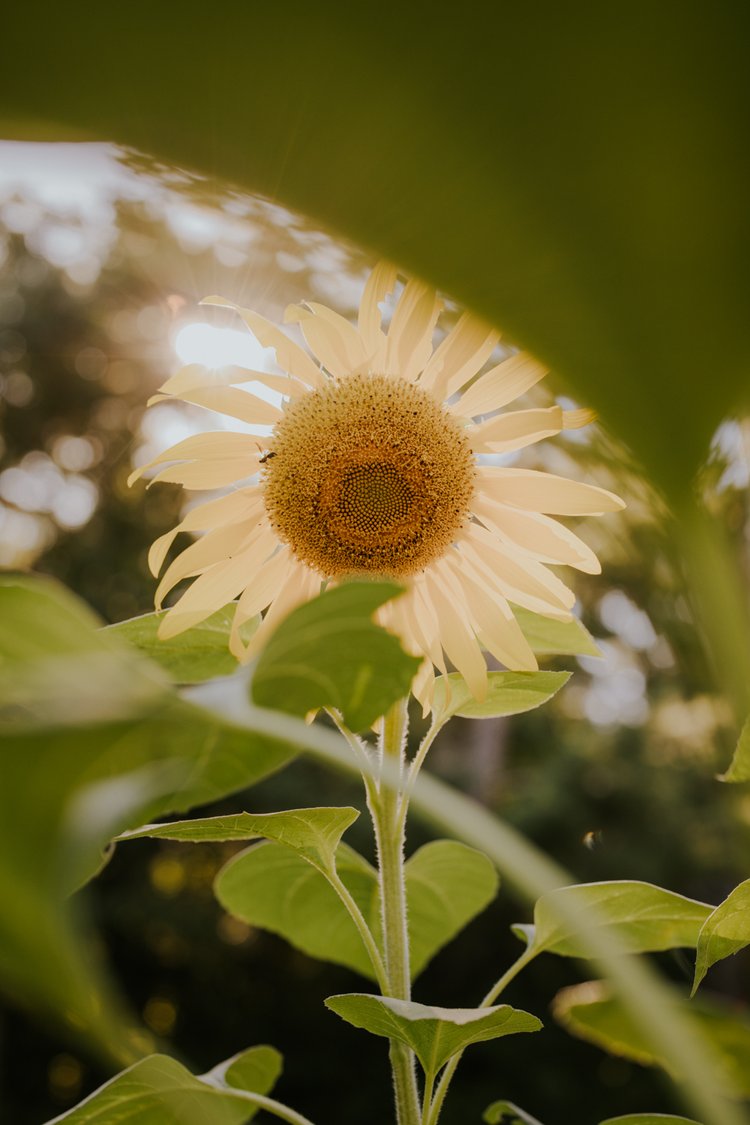
Roasted sunflower seeds
Ingredients
- 8 cups warm water
- ½ cup table salt
Instructions
- Dissolve the salt in the warm water and stir in your sunflower seeds, making sure that the seeds are completely covered with liquid. The sunflower seeds will want to float so you can put a plate on top to weigh them down and keep them submerged in the brine.
- Allow the sunflower seeds to soak for 12-24 hours. The salt will stick to the seeds. Stir well and drain, transferring the seeds to a baking sheet. Spread the sunflower seeds in a single layer.
- Preheat the oven to 325°F and bake the sunflower seeds for 25-30 minutes to completely dry. Store in an airtight container.
- Don’t have time to soak your sunflower seeds overnight? You can bring a pot of salted water to a boil, reduce the heat to a simmer and simmer your sunflower seeds for 1-1.5 hours and then roast.
Notes
Once roasted, you can eat the seeds as they are or with a bit of oil and a sprinkle of spices.
You can also use them wherever you want to add a salty, crunchy ingredient. They’re delicious in trail mix with dried fruit and chocolate chips, and make a nice addition to salads. They can be used as nuts for cookies or cakes, stirred into oatmeal, or added to a stir fry.
What To Avoid Doing When Drying Sunflower Seeds
Some people recommend rinsing your seeds before beginning to dry them. I don’t find this to be necessary, and don’t recommend adding any moisture when the goal is to get the seeds completely dried out.
Roasting Sunflower Seeds
Some people skip brining sunflower seeds and just roast them on cookie sheet at 300 degrees for 15 minutes, but salting and roasting improves their flavor and extends their shelf life. Fresher seeds will have a better flavor after roasting than older seeds would so it’s best to do this soon after harvesting your seeds.
Roasted Sunflower Seeds Recipe
Once you’ve removed the seeds from the flower, pour them into a bowl and skim through with your fingers, removing any leaves or flower debris.
Ingredients:
8 cups warm water
½ cup table salt
Dissolve the salt in the warm water and stir in your sunflower seeds, making sure that the seeds are completely covered with liquid. The sunflower seeds will want to float so you can put a plate on top to weigh them down and keep them submerged in the brine.
Allow the sunflower seeds to soak for 12-24 hours. The salt will stick to the seeds. Stir well and drain, transferring the seeds to a baking sheet. Spread the sunflower seeds in a single layer.
Preheat the oven to 325 and bake the sunflower seeds for 25-30 minutes to completely dry. Store in an airtight container.
Don’t have time to soak your sunflower seeds overnight? You can bring a pot of salted water to a boil, reduce the heat to a simmer and simmer your sunflower seeds for 1-1.5 hours and then roast.
Ways to Eat Sunflower Seeds
Once roasted, you can eat the seeds as they are or with a bit of oil and a sprinkle of spices.
You can also use them wherever you want to add a salty, crunchy ingredient. They’re delicious in trail mix with dried fruit and chocolate chips, and make a nice addition to salads. They can be used as nuts for cookies or cakes, stirred into oatmeal, or added to a stir fry.
Saving Sunflower Seeds For Planting:
Sunflowers are an annual plant, meaning they fulfill their life cycle in one season: planted in the spring, setting seed in the fall, then dying back all together. Because of this, new seeds must be planted each year.
Saving seed from sunflowers you have grown is simple and will help you save money on buying new seeds!
When to harvest sunflower seeds for planting
As the seeds grow in size, the flower will begin to bend over from the weight. Eventually, outer petals will become dry and begin to drop. When the back of the sunflower goes from green to yellow and brown spots appear, the flower is ready for harvesting.
How to harvest sunflower seeds for planting
When the flower is ready, cut it with a 12” stem. Unlike with sunflower seeds you intend to eat, seeds for planting must dry on the flower itself. Tie a brown paper bag around the flower head and hang it upside down indoors for two weeks.
At that point, the seeds are ready to be taken off the flower. Remove them, spread them out, and allow them to dry out for another week or so.
When the seeds will crack if you try to bend them, they are completely dry and ready for storage.
How to store sunflower seeds for planting
Choose the biggest seeds to save. (The rest can be roasted) Put the dried seeds in an airtight container and label with the variety and date.
Sunflower seeds stored in a mason jar will stay viable for about five years. They can also be stored in a Ziploc bag or paper envelope but won’t retain viability for as long. If you don’t have a jar available, a Ziploc is a better choice than an envelope, giving your seeds another year or so of use. Keeping the seeds in the refrigerator is another way to extend their usefulness.
Can you harvest seeds for planting from cut flowers you buy?
The short answer is no. Sellers harvest cut sunflowers before their seeds fully develop, or sometimes before they set at all. Even if the seller is a little late in the cutting and seeds have begun to set, they will not reach maturity on a cut flower.





